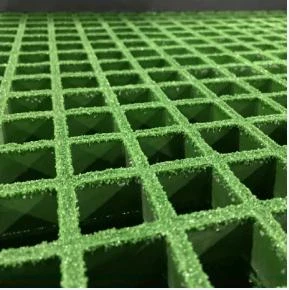loading...
- No. 9, Xingyuan South Street, Dongwaihuan Road, Zaoqiang County, Hengshui, Hebei, China
- admin@zjcomposites.com
- +86 15097380338
- Welcome to visit our website!
fibreglass reinforcement bar
The Advancements and Applications of Fiberglass Reinforcement Bars
In the realm of construction and civil engineering, the continual search for materials that enhance structural integrity while remaining lightweight and durable has led to the advancement of fiberglass reinforcement bars, commonly known as GFRP (Glass Fiber Reinforced Polymer) bars. These innovative materials are redefining the standards of reinforcement used in concrete structures, offering numerous advantages over traditional steel reinforcement bars.
Understanding Fiberglass Reinforcement Bars
Fiberglass reinforcement bars are composite materials made from fiberglass filaments embedded in a polymer resin. The manufacturing process involves pultrusion or filament winding, which provides high tensile strength and resistance to various environmental factors, such as corrosion, chemicals, and temperature fluctuations. Unlike traditional steel rebar, GFRP bars do not rust when exposed to moisture, making them particularly suitable for environments where corrosion is a concern, such as coastal areas or structures exposed to de-icing salts and chemicals.
Enhanced Properties
One of the primary benefits of fiberglass reinforcement bars is their impressive strength-to-weight ratio. GFRP bars are significantly lighter than steel rebar, which makes them easier to handle and transport. Their lightweight nature leads to reduced labor costs during installation, as fewer resources are needed to manipulate and position the bars. Moreover, the ease of cutting and drilling GFRP bars can lead to additional savings in construction time.
Another notable property of fiberglass bars is their non-conductive nature. Unlike steel, GFRP does not conduct electricity, making it an ideal choice for construction in areas sensitive to electrical interference. This is particularly advantageous in structures like power plants, bridges, and buildings that house sensitive electronic equipment.
Durability and Longevity
fibreglass reinforcement bar

The durability of fiberglass reinforcement bars is one of their most compelling advantages. Traditional steel rebar is vulnerable to corrosion, which can compromise the structural integrity of a concrete element over time. In contrast, GFRP bars exhibit excellent resistance to environmental degradation, ensuring that structures reinforced with these bars maintain their strength and integrity over many years, even in harsh conditions. This reliability translates to lower maintenance costs and longer life spans for reinforced structures, presenting significant financial benefits to builders and owners alike.
Environmental Benefits
In today’s eco-conscious landscape, the environmental impact of construction materials is a vital consideration. Fiberglass reinforcement bars are produced using less energy compared to the manufacturing of steel rebar, as the process requires minimal heat treatment. Additionally, GFRP bars are often made from recycled materials, contributing to sustainable construction practices. Their long lifespan also minimizes the need for repairs and replacements, further reducing the ecological footprint of construction projects.
Applications
The application of fiberglass reinforcement bars spans a wide range of projects and industries. These bars are particularly effective in structures subjected to severe environmental conditions, such as bridges, tunnels, and marine structures. Their use is also growing in the construction of parking garages, water treatment facilities, and residential buildings, where corrosion resistance is critical.
Moreover, with the increasing interest in utilizing sustainable and innovative materials, GFRP reinforcement bars are finding their way into modern architectural designs. Architects and engineers favor GFRP for its design flexibility, enabling them to create streamlined, aesthetically pleasing structures without compromising strength.
Conclusion
As the construction industry continues to evolve, the introduction and adoption of fiberglass reinforcement bars represent a significant advancement in materials technology. GFRP bars provide an innovative solution that addresses many of the limitations associated with traditional steel reinforcement. Their lightweight, durable properties, combined with environmental advantages and versatility in applications, position fiberglass reinforcement bars as a preferred alternative in modern construction practices. With ongoing research and development, the potential for GFRP bars remains vast, promising a future of enhanced structural solutions that are both resilient and sustainable.
-
The Rise of FRP Profiles: Strong, Lightweight, and Built to LastNewsJul.14,2025
-
SMC Panel Tanks: A Modern Water Storage Solution for All EnvironmentsNewsJul.14,2025
-
GRP Grating: A Modern Solution for Safe and Durable Access SystemsNewsJul.14,2025
-
Galvanized Steel Water Tanks: Durable, Reliable, and Ready for UseNewsJul.14,2025
-
FRP Mini Mesh Grating: The Safer, Smarter Flooring SolutionNewsJul.14,2025
-
Exploring FRP Vessels: Durable Solutions for Modern Fluid HandlingNewsJul.14,2025
-
GRP Structures: The Future of Lightweight, High-Performance EngineeringNewsJun.20,2025
